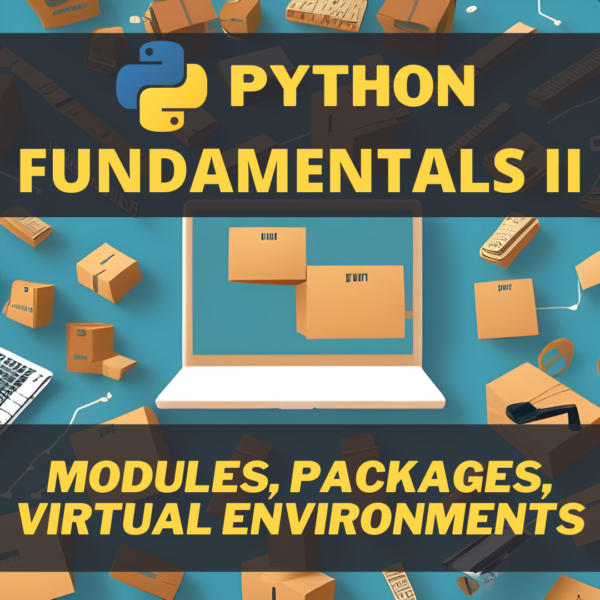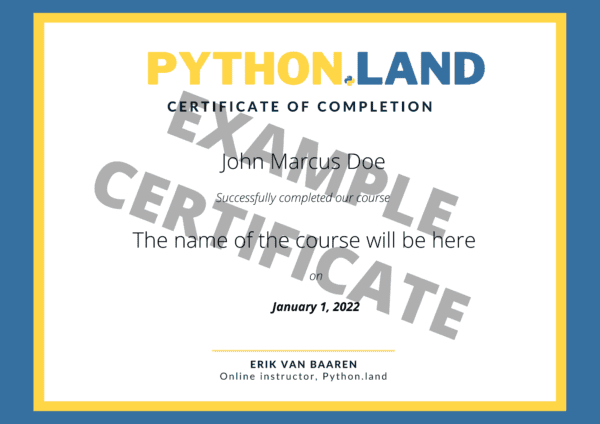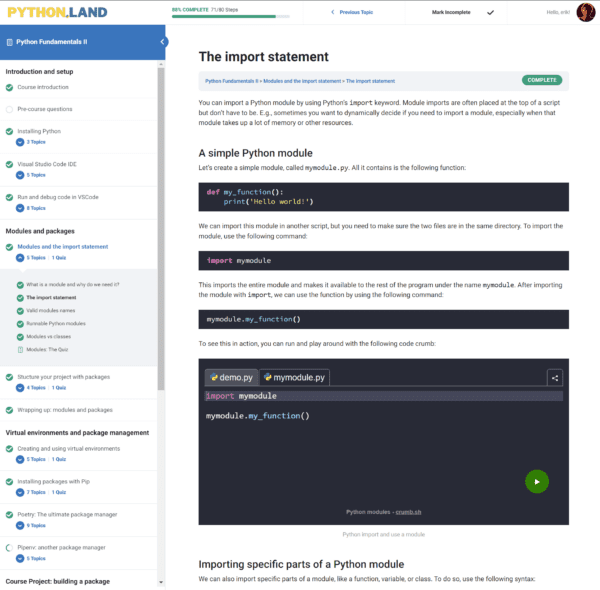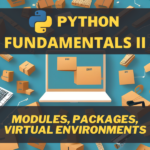Modules, Packages, And Virtual Environments (2025)
€ 59.00 Original price was: € 59.00.€ 39.00Current price is: € 39.00.
Learn about creating modules and packages, using virtual environments, and package management. This course is a seamless continuation of Python Fundamentals 1, but is suitable for anyone with basic knowledge of the Python language.
As you might have experienced, learning Python, the language itself, is not enough to get truly productive as a Python programmer. Although Python is a versatile and powerful language in itself, the rich ecosystem of libraries and modules allows you to build the coolest projects with the snip of a finger. This course explains leveraging this large ecosystem to your advantage using virtual environments, the Pip package installer, and package managers. Besides writing all that cool code, you’ll also want to organize your code better, especially when your programs get bigger. To do so, I’ll introduce you to modules and packages that allow you to organize and structure your code. I’ll show you how to create packages and put your code into modules. We’ll practice everything learned in a final course project, where it all comes together!
The main topics of this course are:
- Creating and using modules
- Structuring your code in packages and modules
- Virtual Environments: why you need them, how they work, how to create and use them
- Installing packages using Pip
- Running your project and managing dependencies with Poetry or Pipenv
- Convert your project into a sharable executable with PyInstaller
Anyone with a base-level knowledge of the Python language can easily follow this course. If you’re new to Python programming, I recommend starting with Python Fundamentals I: Python course for beginners.
Try before you buy
You can try a significant portion of the course for free to determine if it suits you.
Optionally, if you’re logged in (log in or register for a free account), the site will:
- Record your progress
- Remember the answers you gave in the quizzes
This way, you seamlessly continue the course if you decide to buy it.
Click to try the course (for free)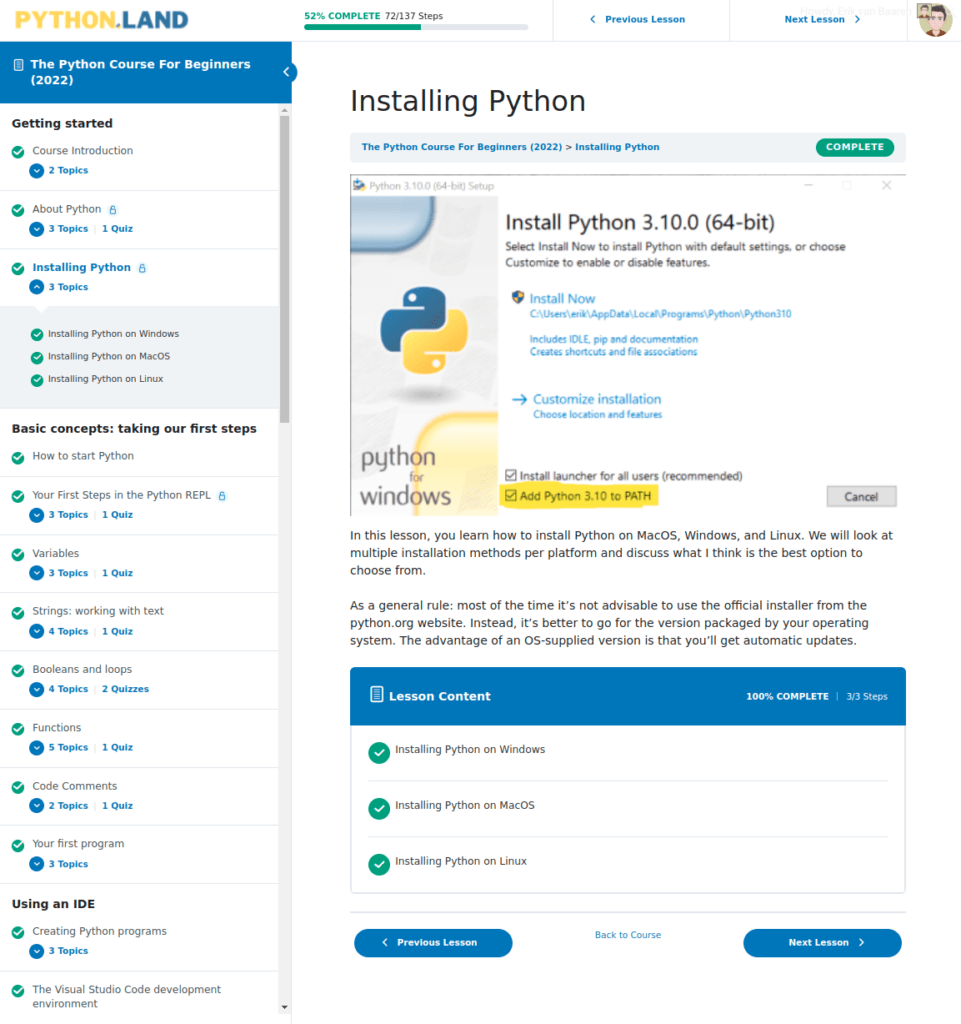
Easy navigation
A distraction-free course system designed for optimal learning
Keep track of progress
Mark lessons as complete and continue where you left off
Learn at your own pace
I get it; we’re all busy! This course allows you to learn at your own pace. No pressure!
What others are saying
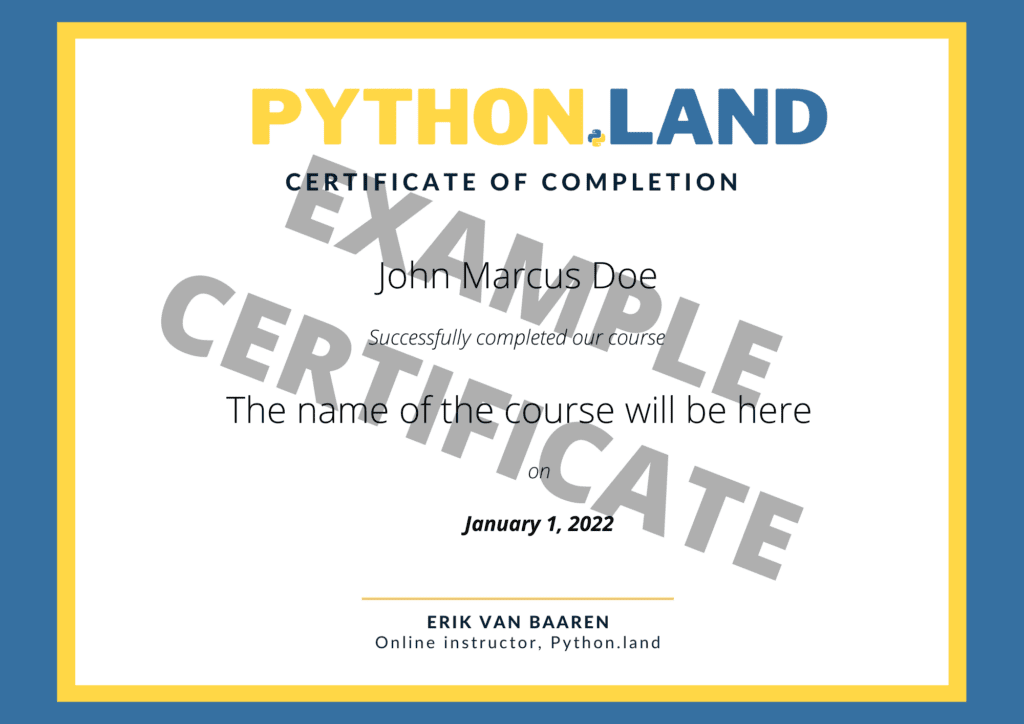
Earn a certificate of completion
To use on your CV and LinkedIn
Easy to use PDF format
Lifetime access
You get lifetime* access to the course, including all its updates and improvements
* For as long as this site exists
Easy refunds
Not for you? Let me know within five days of your initial purchase, and I’ll refund your money.
Up-to-date
Python Land constantly monitors and tests new Python releases and updates the courses accordingly. You can rest assured that this course will work with the latest Python version.
About the author

Python Land is owned by Erik van Baaren (more about him here), who also happens to be the author of numerous articles and tutorials featured on this and other websites. This course was carefully crafted by Erik himself. He continually tweaks and updates the course to reflect the latest developments, so you can be sure this course is up-to-date.
With 25 years of experience as a professional software developer, Erik holds a Master of Science degree in computer science.
Frequently Asked Questions
Will the course stay the same after my purchase?
I continuously update all Python courses on this site to reflect the latest developments in Python. I promptly fix mistakes and issues brought to my attention. You will keep your lifetime access to this course and all its improvements.
Is there a refund policy?
Yes. If you don’t like the course, I’ll refund your money if you ask me within five days of your initial purchase. Refunds are limited to one refund per person per course.
Can I follow this course on a mobile phone or tablet?
Yes. The course system will work fine on mobile phones or tablets and adapt to smaller screens. However, some of the code examples might be harder to read. Also, you need a PC with a Python installation to get the required practice. So yes, you can read the theory and do quizzes on a mobile phone, but I strongly recommend a PC for the best experience.
What experience level is required to follow this course?
This Python course requires basic Python language skills. Ideally, you followed my beginner course: Python Fundamentals I. If not: you need to know about things like functions, variables, classes, objects, lists, and dictionaries.
How long will it take to finish the course?
The honest answer is: it depends on your experience level, the amount of effort you put into the exercises, extra material/links, etcetera. As a very rough guideline, you will spend about 40 hours before finishing the course.
Can I get help if I get stuck?
I’m available for questions and comments through the contact form (e-mail). If you get stuck, I’ll do everything possible to get you going again. I value all input and encourage you to get in touch if needed. Your input will help me to improve the course.
Can I try it before I buy it?
Yes, you can! See below. There are sample lessons open for everyone to see and try.
Python Fundamentals II course overview
Please see the complete course overview below. The free sample lessons will give you an idea of the content and course system.

